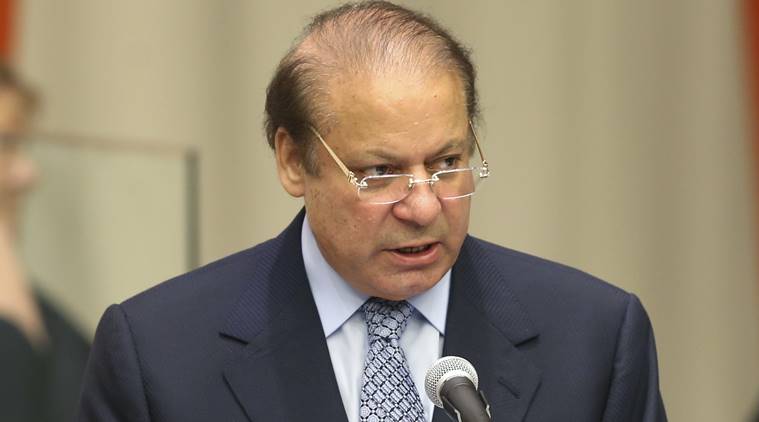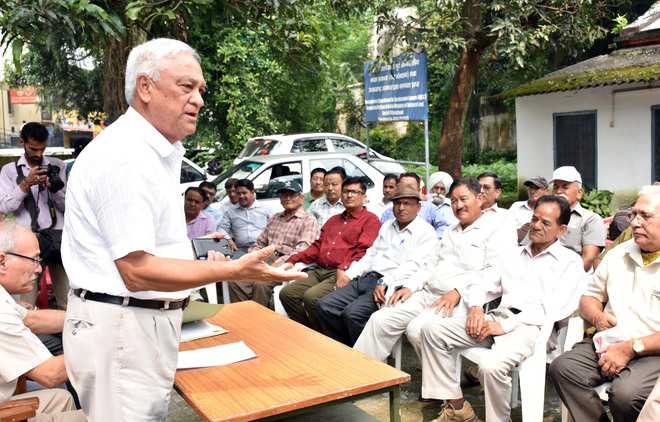
Deliberations in progress. PTI
New Delhi, September 26
Prime Minister Narendra Modi on Monday said “blood and water cannot flow together,” as he chaired a review meeting of the 56-year-old Indus Water Treaty during which it was decided that India would “exploit to the maximum” the waters of Pakistan-controlled rivers, including Jhelum, under the water-sharing pact.
Held amidst heightened tension between India and Pakistan, the meeting also decided to set up an inter- ministerial task force to go into the details and working of the treaty with a “sense of urgency”, government sources said.
Attended by National Security Adviser Ajit Doval, Foreign Secretary S Jaishankar, the Water Resources Secretary and senior PMO officials, the meeting also noted that the meeting of Indus Water Commission could “only take place in an atmosphere free of terror”. The Commission has held 112 meetings so far.
“Prime Minister Modi’s message at the meeting was that ‘rakt aur paani ek saath nahin beh sakta’ (blood and water cannot flow together),” sources said.
Apart from deciding to exploit to the maximum the capacity of three of the rivers that are under Pakistan’s control— Indus, Chenab and Jhelum—in the areas of hydropower, irrigation and storage, the meeting also agreed to review the “unilateral suspension” of the Tulbul navigation project in 1987.
Sources asserted that the decision to maximise the water resources for irrigation would address the “pre-existing” sentiment of people of Jammu and Kashmir, who had complained in the past about the treaty not being fair to them.
The meeting came as India weighed its options to hit back at Pakistan in the aftermath of the Uri attack that left 18 soldiers dead, triggering demands that the government cancel the water distribution pact to mount pressure on that country.
Under the treaty, which was signed by Prime Minister Jawaharlal Nehru and Pakistan President Ayub Khan in September 1960, water of six rivers—the Beas, Ravi, Sutlej, Indus, Chenab and Jhelum—were to be shared between the two countries.
Pakistan has been complaining about not receiving enough water and gone for international arbitration in a couple of cases. PTI
PM chairs meeting to review Indus Water Treaty
New Delhi, September 26
Prime Minister Narendra Modi today chaired a meeting to review the Indus Water treaty with Pakistan amidst heightened tension between the two countries.
National Security Advisor Ajit Doval, Foreign Secretary S Jaishankar, the Water Resources Secretary, and senior PMO officials are present at the meeting.
The review is being undertaken as India weighs options to give a befitting response to Pakistan in the wake of the Uri attack that left 18 soldiers dead.
There have been consistent calls in India that the government scrap the water distribution pact to mount pressure on Pakistan in the aftermath of the terror attack.
Under the treaty, which was signed by Prime Minister Jawaharlal Nehru and Pakistan President Ayub Khan in September 1960, water of six river – Beas, Ravi, Sutlej, Indus, Chenab and Jhelum – were to be shared between the two countries.
Pakistan has been complaining of not receiving enough water and gone for international arbitration in couple of cases.
Jammu and Kashmir Deputy Chief Minister Nirmal Singh had said last week that his state will fully support whatever decision is taken by the Union government on the 1960 agreement.
“The treaty has caused huge loss to Jammu and Kashmir” as the people of the state cannot fully utilise the waters of various rivers, particularly Chenab in Jammu, for agricultural and other activities, Singh had said.
“The state government will support whatever decision is taken by the central government on Indus Waters Treaty,” he had said.
India had last week made it clear that “mutual trust and cooperation” was important for such a treaty to work. PTI









 Pakistani prime minister Nawaz Sharif (AP Photo)
Pakistani prime minister Nawaz Sharif (AP Photo)

























































